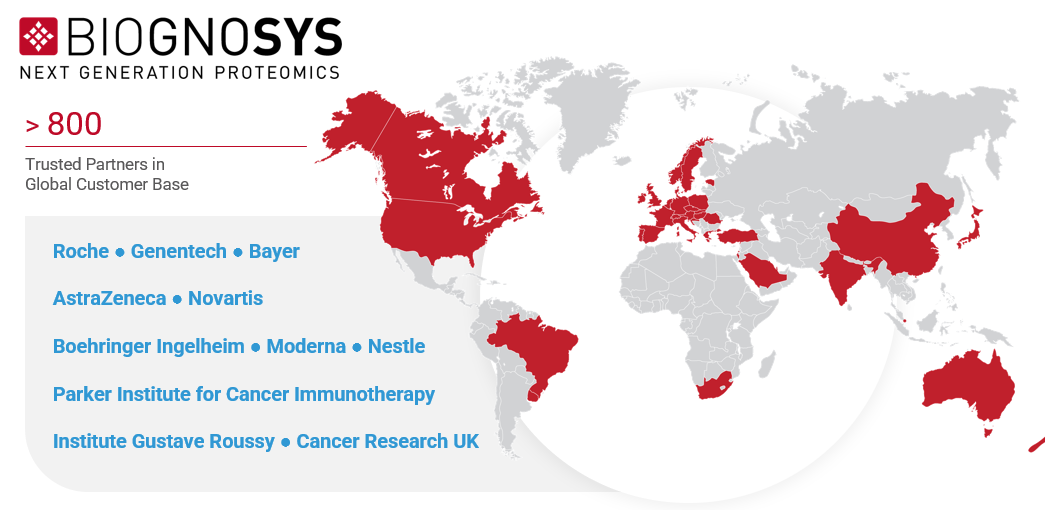
Proteomics: The missing piece of the drug development puzzle
In recent years, the pharmaceutical industry has been focused on targeted drug discovery and accelerating the move towards precision medicine.
These therapeutic approaches usually rely on technologies such as genomics and transcriptomics to understand patient phenotypes and predict whether they are likely to respond.
However, the link between genotype and phenotype is not linear and can be challenging to predict. As a result, genomic or transcriptomic data cannot accurately represent patient phenotypes.
Ultimately, this means that we are missing vital information about how patients respond to targeted therapy, representing a major stumbling block for the success of precision medicine in the clinic.
Filling in the gaps left by genomics and transcriptomics
Proteomics gives a better representation of the phenotype and the current state of a person’s dynamic health.
Analyzing the proteome can reveal biological, functional, and even structural information about entire biological processes and disease pathways. It gives the clearest views of the mechanisms behind disease, and in turn, the best way to treat it.
However, until recently, drug developers have been unable to access the wealth of information contained within the proteome due to technological limitations. Now new large-scale mass spectrometry technologies are opening up the proteome.
At Biognosys, we are the proteomics technology leaders. We have overcome the technical issues that dogged early proteomics techniques and can now offer proteomic analysis that is truly sensitive and reproducible at scale.
With the proteome becoming an accessible resource in drug discovery, the next era of precision medicine is fast approaching.
Our ultimate goal is to transform how drugs are discovered and developed, partnering with some of the world’s most innovative biopharma companies to deploy proteomics and unravel critical challenges in research.
Proteomics reveals novel biology
Our customers often come to us because they have tried genomic and transcriptomic approaches, but they realize they are still missing vital information to help them understand the underlying biology of their targets and lead compounds.
This includes valuable functional data about biological pathways involving post-translational modifications such as phosphorylation, structural changes caused by pathway activation, or protein degradation, all of which can only be explored with proteomics.
For example, we teamed up with Indivumed to create a database of phosphoproteins from around 10,000 tumor samples - the largest ever proteomics and phosphoproteomic project of its kind. Pharma companies are now using the database as a valuable resource to identify novel unexplored targets for innovative drug discovery research.
Proteomics provides high quality, quantitative clinically relevant data
Other customers come to us because they are looking for high-quality, quantitative clinically relevant data that can help de-risk the drug development process.
For example, a company came to work with us looking for a pharmacodynamic marker to help them understand how their therapy impacted protein degradation.
We helped them identify an appropriate marker and use it to evaluate their drug in a clinical setting, providing the quantitative data and absolute specificity and certainty needed to continue along the drug development pipeline.
Proteomics supports all stages of the drug development pipeline
Because it works in the same way across all species, tissues, and samples, our technology is applicable across the entire drug development process.
This means that proteomics insights transfer easily from early research and development, to preclinical, and ultimately application in the clinic, providing trust, certainty, and knowledge continuity throughout the process.
What’s more, we can apply our technology at a range of scales from pilot projects to massive trials, allowing all our customers to access reproducible, reliable proteomics data whether they have 10,000 samples or fewer than 100.
Recently, we worked with Pliant Therapeutics to successfully identify biomarkers in idiopathic pulmonary fibrosis in a small-scale project involving just 30 samples.
At the other end of the scale are our high-throughput workflows that ensure we can handle large-scale projects with thousands of longitudinal clinical samples, providing robust, comparable datasets to accelerate clinical biomarker discovery.
Multi-omic insights for drug discovery
Combining genomics and transcriptomics with the power of proteomics can give deeper insights into the biological pathways behind disease and more certainty in drug development.
In the future, we believe that combining data from proteomics, transcriptomics, and genomics will form the basis of drug development. That’s why we were recently selected as proteomics provider for CancerScout, a major project using AI to combine multi-omic data for precision cancer treatment.
Why work with Biognosys?
Our experience and expertise make us a trusted partner in drug development. We work with 19 of the top 20 top pharma companies, as well as small biotech startups, and mid-size companies, to help them unlock the power of the proteome and accelerate their drug development pipeline.
